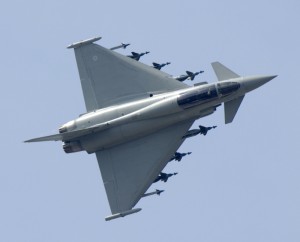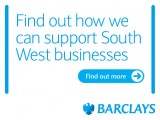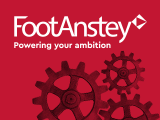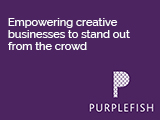 Prime Minister David Cameron is to urge India to reconsider its decision to choose France's Dassault Rafale over the Eurofighter Typhoon as preferred bidder for a $15bn contract for 126 warplanes.
Prime Minister David Cameron is to urge India to reconsider its decision to choose France's Dassault Rafale over the Eurofighter Typhoon as preferred bidder for a $15bn contract for 126 warplanes.
His chances of changing their minds look limited and although there are no short-term job loss worries relating to the Eurofighter, the French success does represent a major long-term setback for the plane whose engine – the Eurojet EJ20 – is built by Rolls-Royce at Patchway, Bristol, as a member of the Eurofighter consortium.
The Indian decision was between the Rafale and the Typhoon since two US planes, Lockheed’s F-16 and Boeing’s F/A-18, had already been ruled out – and Lockheed’s more modern F-22 was not offered.
The multi-role Rafale, which entered service in the French air force in 2006, was deployed with success during the NATO-led military intervention in Libya last year, an operation in which France and Britain (flying the Typhoon) carried out the majority of airstrikes.
Until now the Rafale has had great difficulty finding foreign buyers with many specialists saying it was too expensive and a generation behind other aircraft. The Netherlands turned it down in 2001, South Korea the following year. Singapore said ‘no’ in 2005 and Morocco in 2007. Brazil appeared ready to sign a deal two years ago but never came through. It was also turned down by Switzerland and the United Arab Emirates (although the UAE may now be having second thoughts, as we explain below). Against this background, the preliminary deal with India is being celebrated with relief in Paris. “India’s purchase of Rafale warplanes means a technological, moral and political victory by the best fighter in the world,” said Bernard Carayon, a member of parliament from President Sarkozy’s ruling coalition who has a special interest in France’s export industries.
In London, Mr Cameron said: "The decision is obviously disappointing but it is about who the Indians have assessed as making the lowest bid and therefore asked to enter into further negotiations. They have not yet awarded the contract," he told parliament, adding that he did not expect any job losses in Britain as a result of the decision and insisted "it doesn't rule out Typhoon for India. We must go on making the case. This (Eurofighter) is a superb aircraft with far better capabilities than Rafale and we will try and encourage the Indians to take that view.”
However, most observers expect the decision to be a knockout blow to the Eurofighter, which has been developed by a consortium of four European aviation companies – the German and Spanish branches of EADS, Britain’s BAE Systems and Italy's Finmeccanica. It is likely that, under the deal, 18 Rafale jets will be built in France and 108 in India, reflecting India’s desire to improve its aeronautics industry as well as equip its air force with modern warplanes..
Indeed, many commentators cite technology transfer, prices and performance as being major factors in India’s selection of the Rafale as its next-generation fighter.
The Indian Air Force is a satisfied user of long standing of French fighters, going back to the Dassault Ouragan in the 1950s. It was also particularly appreciative of the performance of its Mirages during the 1999 Kargil campaign against Pakistan, and of the support it then obtained from France. During that campaign, India obtained French clearance – and possibly more – to urgently adapt Israeli and Russian-supplied laser-guided bombs to the Mirages, which were able to successfully engage high-altitude targets that Indian MiG-23s and MiG-27s had been unable to reach.
France’s steadfastness as a military ally contrasted strongly with that of the US, which stopped F-16 deliveries to Pakistan (but kept the money) when it found it expedient to do so, and slowed or vetoed delivery of components for a light combat aircraft that India was developing. And, of course, the 1998 arms embargo, decreed by the US after India’s nuclear test in May of that year, left a very bad taste in Indian mouths. France, on the contrary, was the only Western nation not to impose sanctions on that occasion.
That, Indian sources say, was New Delhi’s real reason for eliminating Boeing and Lockheed Martin from the fighter competition.
India has resolved, these sources say, to buy only second-line equipment from the US such as transport (C-17, C-130J) or maritime patrol aircraft (P-8I). Vital weapons such as missiles and fighters, when they cannot be locally produced, will remain the preserve of France and Russia. Political considerations were also a significant factor playing against the Eurofighter as it is produced by a consortium of four nations, each with different foreign policies and different attitudes and tolerances to arms exports, Indian officials were nervous about their ultimate reliability as a single supplier.
Germany is a long-standing Indian aviation partner, and a respected role model for Indian politicians, many of whom were educated there. German companies – essentially the former Messerschmitt-Boelkow-Blohm, now part of EADS – helped Hindustan Aeronautics Ltd. develop both the LCA and the Advanced Light Helicopter, now called Dhruv. These links were the reason the Eurofighter bid was led by Germany’s Cassidian, and not BAE Systems, the former colonial power. But Germany had dithered over technology transfer for LCA, soft-pedaled on ALH tech transfer when German pacifists raised their eyebrows, and coughed when India almost went to war with Pakistan over Kargil and Kashmir, so in the final analysis it could not be considered a reliable supplier of major weapons.
Italy has never sold a major weapon to India, and so could bring neither influence nor reputation to support Eurofighter, while the third partner, Spain, is totally absent from the Indian military landscape. This left BAE Systems as the best-known Eurofighter partner in India, and so by default as its ultimate public face. BAE in 2003 sold £1.5bn’s worth of Hawk jet trainers to India (with Adour engines built by Rolls-Royce in Bristol), with a follow-on, £500m order in 2010. However, its previous major sale to India was the Jaguar light attack aircraft in the 1970s. In fact, this aircraft was jointly developed by Britain and France on a 50/50 basis, and while it was license-produced by HAL it was never really successful as a fighter. Furthermore, France could claim as much benefit from its Indian career as BAE.
Even more problematic is the fact that German law prohibits deliveries of weapons and spares, Italian law and public opinion would demand an embargo, while Spanish legislation is murky. What would happen, Indian politicians must have wondered, if after buying the Eurofighter they went to war? Would spares and weapons be forthcoming, or would they be embargoed? The political risk was obviously too big to take.
Weapons also played a significant role in persuading India to opt for Rafale: not only is its weapons range mostly French-made, and thus not subject to a third-party embargo, but so are all of its sensors. Eurofighter, whose air-to-air missiles include the US-made AIM-120 Amraam and the German-led IRIS-T, and whose primary air-to-ground weapon is the US-made Paveway, was obviously at a competitive disadvantage in this respect.
Furthermore, the Rafale is nuclear-capable and will replace the Mirage 2000N in French service as the carrier of the newly-upgraded ASMP/A nuclear stand-off missile; it is also capable of firing the AM-39 Exocet missile, giving it an anti-ship capability that its competitors do not have. India is also interested in fitting its BrahMos supersonic missile to a wide range of its combat aircraft, and Rafale could apparently carry it. Given that India had sworn to buy the cheapest compliant competitor, it would have been unable to justify picking the Rafale had this not been offered at the lower price. While official figures have not been released, and indeed may never be, initial reports from New Delhi claim that Rafale was offered at a unit price of $4-$5m less than Eurofighter, which is a surprisingly large advantage given the French aircraft’s reputation of being high-priced.
The French offer also featured substantially lower costs of ownership, according to the same reports, thanks to lower fuel consumption and simpler maintenance requirements.
If true, these figures imply the French offer undercut Eurofighter by more than $600m, which is a large enough difference for one French insider to wonder whether Dassault Aviation will ever make any money on the contract. Meanwhile the Rafale has re-emerged as favourite to clinch a $10bn contract with the UAE, the world's fourth-largest oil exporter.
“Everything has been unlocked (between the UAE and Dassault)," a source told La Tribune. A French government source also told Reuters that that there could also be a further deal with the Emirates this month. La Tribune said there were a few technical details still to be ironed out, but that they were easy to resolve. It added that as part of the deal Paris would take back the Emirates' existing Dassault-made Mirage fighters.
French defence minister Gerard Longuet hinted there could be more deals ahead. "Good news are like worries, they fly in squadrons," he said.
“The Indian decision,” he added, “is the start of a squadron of good news." A French win in the UAE could also lead to further contracts in the Gulf Arab region which shares the West's concerns that Iran is using its nuclear energy programme to develop weapons.
Qatar, a close French ally, said last year it wanted to replace its fleet of Mirage fighter jets during 2012 possibly buying 24 to 36 units while Kuwait said in 2010 said it was also considering buying Rafales to replace its ageing Mirage fleet.
According to analysts the Gulf countries are looking to have the same aircraft for inter-operability reasons as well as differentiating themselves from the region’s power house Saudi Arabia.






























